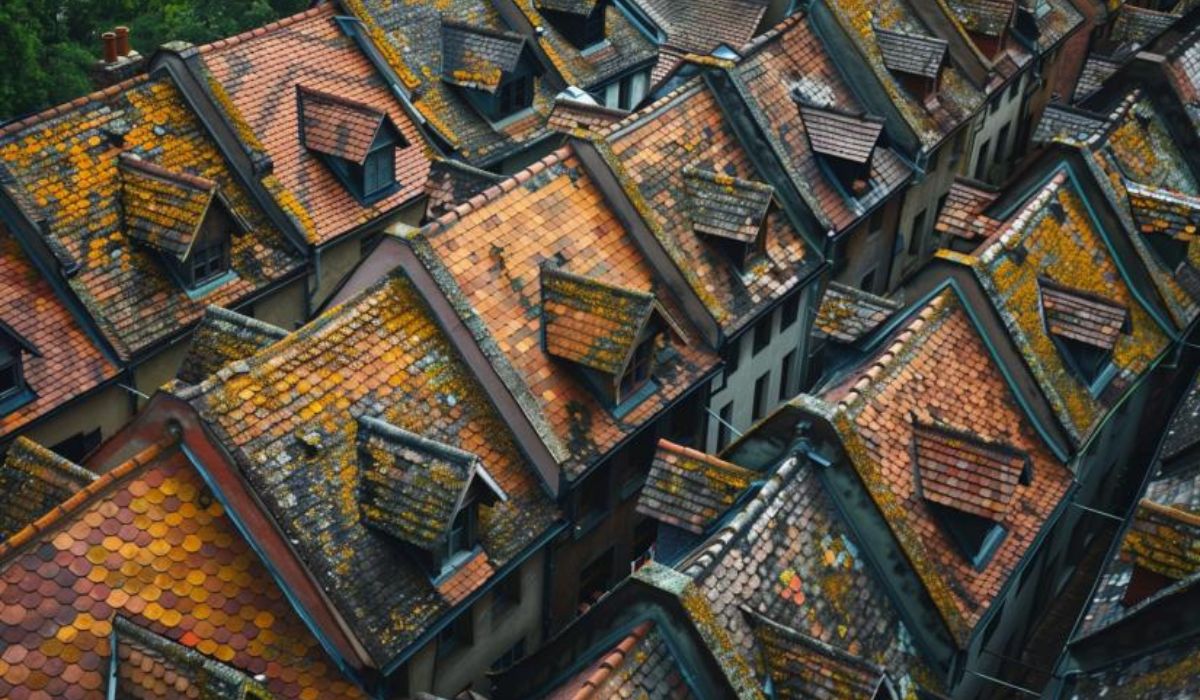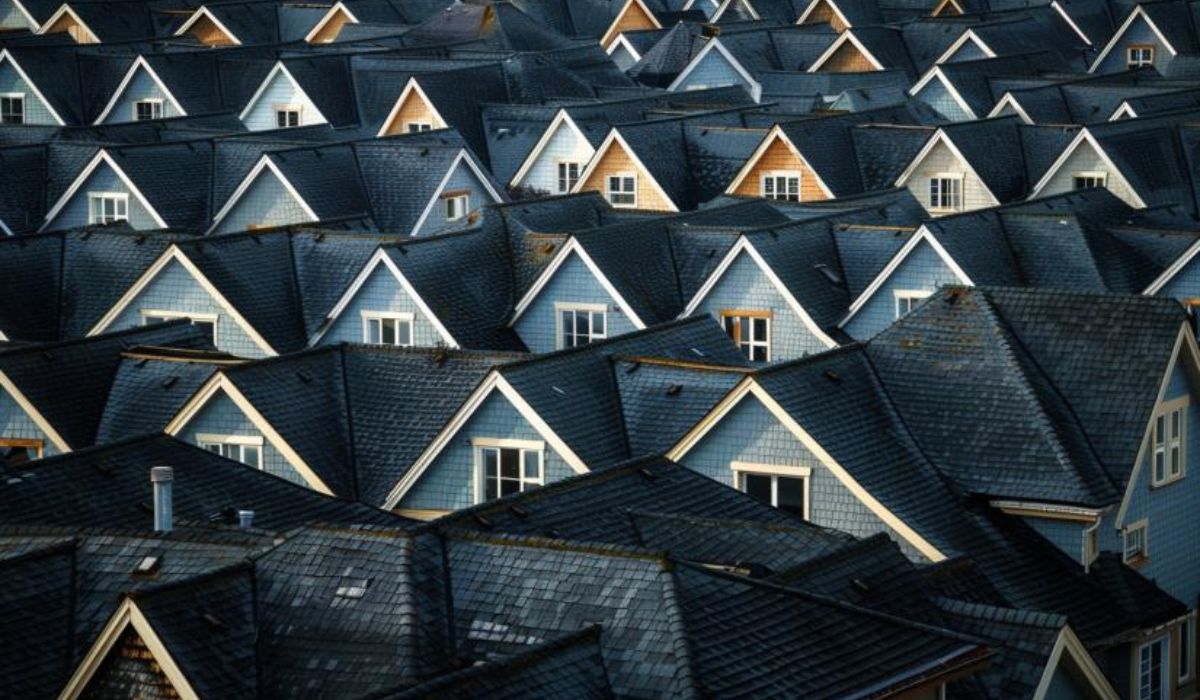
Have you ever wondered how long your roof will last? Are you unsure if it’s time to start thinking about a replacement? Understanding the lifespan of your roof can help you plan and make informed decisions about your home’s maintenance. So, how long do roofs actually last? Let’s find out.
Key Takeaways:
- The average lifespan of a roof ranges from 25 to 50 years.
- The specific lifespan depends on factors such as the roofing material and its quality.
- Architectural shingles can last between 30 to 50 years, while three-tab asphalt shingles typically have a lifespan of 10 to 15 years.
- Roofing materials like clay tiles, concrete tiles, metal roofing, slate tiles, wood shakes, and wood shingles all have varying lifespans.
- Proper roof maintenance and addressing minor issues promptly can help extend the life of your roof.
Factors Affecting Roof Lifespan
Several factors can impact the lifespan of a roof. Proper roof maintenance plays a crucial role in prolonging the life of a roof. Regular inspections, both professional and self-conducted, can help identify and address minor problems before they escalate into major issues. “Regular inspections, both professional and self-conducted, can help identify and address minor problems before they escalate into major issues.”
Common problems that may affect the lifespan of a roof include bad nailing techniques, damaged or missing shingles, reused flashing, roof stains, sagging rooflines, water leaks, and visible moisture damage inside and outside the home. “Common problems that may affect the lifespan of a roof include bad nailing techniques, damaged or missing shingles, reused flashing, roof stains, sagging rooflines, water leaks, and visible moisture damage inside and outside the home.”
Extreme temperatures, moisture in the attic, and ice dams in winter can also contribute to roof deterioration. “Extreme temperatures, moisture in the attic, and ice dams in winter can also contribute to roof deterioration.”
Addressing these issues promptly can help extend the life of a roof and prevent costly replacements. “Addressing these issues promptly can help extend the life of a roof and prevent costly replacements.”
Longest Lasting Roofing Materials
When it comes to choosing a roofing material that offers exceptional longevity, slate roofs and concrete roofs are among the best options. Not only do these materials provide durable protection for homes, but they also boast impressively long lifespans.
“Slate roofs can last anywhere from 50 to 100 years, making them a lifetime investment for homeowners,” says roofing expert Jane Thompson. With proper care and maintenance, a slate roof can provide reliable protection for several decades, offering peace of mind to homeowners.
Concrete roofs are another popular choice for those looking for longevity. With a lifespan of 50+ years, concrete roofs are built to withstand the test of time. According to roofing specialist Mark Anderson, “Concrete roofs offer long-lasting protection for homes, ensuring homeowners can avoid frequent roof replacements.”
While slate and concrete roofs may come with a higher upfront cost compared to other materials, their extended lifespans can save homeowners money in the long run. By investing in these durable roofing options, homeowners can enjoy the peace of mind that their roofs will stand strong for many years to come.
Protecting Your Investment
Impact of Climate and Maintenance

The lifespan of a roof can be significantly affected by the climate in which it is located. Extreme weather conditions such as excessive heat, UV rays, hail storms, strong winds, and heavy snowfall can all contribute to roof deterioration. For instance, roofs in sunny climates tend to have a shorter lifespan due to increased heat absorption. This heat exposure can cause the roofing material to degrade faster over time.
Adequate maintenance is crucial in preserving the longevity of a roof. Regular inspections, cleaning, and addressing minor issues promptly are essential for preventing small problems from developing into larger, more expensive ones. By conducting regular maintenance, homeowners can identify and repair any damage or weaknesses before they worsen, prolonging the lifespan of their roof.
Proper attic ventilation is also a vital aspect of roof maintenance. It helps to maintain a consistent temperature within the attic space, reducing the risk of moisture buildup. Excessive moisture can result in roof damage and the growth of harmful molds, which can further accelerate the deterioration of the roof.
By considering the impact of climate and implementing regular maintenance practices, homeowners can effectively protect their roofs and prolong their lifespan. Taking these proactive measures will not only help maintain the structural integrity of the roof but also prevent costly repairs or premature roof replacements in the future.
Conclusion
The lifespan of a roof is influenced by various factors, including the quality of the roofing material, regular maintenance, climate, and installation. By selecting high-quality materials and promptly addressing any issues, homeowners can significantly extend the life of their roofs. It is also essential to understand the average lifespan of different roofing materials to make informed decisions about roof replacements and repairs.
When determining the timeline for roof replacement, factors such as climate and maintenance should be considered. Extreme weather conditions, such as excessive heat, UV rays, hail storms, strong winds, and heavy snowfall, can impact the longevity of a roof. Proper maintenance, including regular inspections, cleaning, and addressing minor issues, plays a vital role in ensuring the durability of the roof.
By taking proactive measures, homeowners can ensure that their roofs provide long-lasting protection for their homes. Understanding the factors that influence roof lifespan and considering the specific needs of the climate and maintenance can help homeowners make informed decisions and plan for roof replacements within an appropriate timeline. By investing in high-quality materials and proper maintenance, homeowners can maximize the longevity of their roofs and avoid costly replacements in the future.
Source Links
- https://www.thisoldhouse.com/roofing/reviews/how-long-does-a-roof-last
- https://www.bhg.com/how-long-do-roofs-last-8347864
- https://www.billraganroofing.com/blog/how-long-does-a-roof-last

Meet William Adams, a seasoned roofing expert with over 30 years of hands-on experience in the industry. Having worked tirelessly under the scorching sun and through the fiercest storms, William brings a wealth of knowledge and expertise to the table. Hailing from the heart of the USA, he’s witnessed the evolution of roofing practices firsthand, mastering every aspect along the way. Now retired from the field, William spends his days cherishing time with his loved ones while sharing his invaluable insights through this platform. With William at the helm, you can trust that every tip, advice, and recommendation provided is backed by years of real-world experience and unwavering dedication to quality craftsmanship. Join us as we journey through the world of roofing, guided by the wisdom and passion of a true industry veteran.
